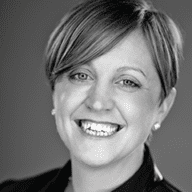As part of the implementation of PDUFA VI and 21st Century Cures, the FDA is continuing to develop guidance to enable more widespread usage of patient experience data to inform regulatory decision-making and is trying to best address the questions of defining it and what methods to collect it that will be most acceptable for benefit-risk assessments.
What is Patient Experience Data?
Data that are collected by any persons and are intended to provide information about patients’ experiences with a disease or condition. It includes the experiences, perspectives, needs and priorities of patients related to (but not limited to):
- Symptoms of their condition and its natural history
- Impact of the conditions on their functioning and quality of life
- Experience with treatments
- Input on which outcomes are important to them
- Patient preferences for outcomes and treatments
- Relative importance of any issue as defined by patients
(Source: Title III, Section 3002(c) of the 21st Century Cures Act)
Who can collect this data?
Any persons including patients, family members and caregivers of patients, patient advocacy organizations, disease research foundations, researchers, and drug manufacturers
How to Collect This data?
Gathering patient experience data is about understanding a human perspective, and therefore uses data collection techniques from the social sciences, not the bio-chemical and medical techniques that pharmaceutical researchers have been using. Thus, the emerging guidance discusses ways to do good research in the social sciences. The main methods discussed are surveys/questionnaires, interviews and focus groups. These are good methods for eliciting people’s opinions and experiences, although there are others such as observation or analysis of conversations on social media.
TREND Community uses natural language processing and the machine learning techniques that accompany it on social media conversations to effectively and efficiently gather patient perspective and experience data to listen to what patients and caregivers are saying in their everyday lives. This novel technique has captured the interest of the FDA. We have had and are continuing to have conversations with the FDA regularly to hopefully clear the way for social media analysis techniques to be acceptable to help support better data collection and get the true patient voice heard.

